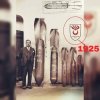After Greek bombs, Turkish bombs is a must - another poorly documented subject, every input will be more than welcome.
Turkish bombs were produced in the Interwar period by the Sakir Zumre company ("Zümre Harp Sanayi Fabrikası" "Sakir Zumre War Industry Factory") and included a surprising wide range of bombs.
Newspapers reported in 1937 that this company sold aerial bombs to Greece and it was perceived as a deliberate move from the Ataturk government to turn a new page in the relations between Turkey and Greece.
According to Turkish sources these bombs were also exported to Bulgaria, Poland (?????) and (probably after ww2) Egypt, Syria and Jordan.
One may have legitimate doubts upon the performances of the 1939 bomb series as their partly folded wing (aimed at spinning the bomb, as on early ww1 Michelin bombs and on interwar Bofors bombs) seem rather flimsy. The reinforcing circle on the 500kg bomb seems also quite "modest" for its task. Generally speaking, judging from the photos, these bombs seem of poorer quality than the previous "small bombs" series.






(the guy standing in the photo is Sakir Zumre, one of the earliest and closest supporter of Mustafa Kemal, and the "father" of modern Turkish ammunitions industry, as well as being the one who put Turkish economy on its rails after the end of ww1).
Any details upon weight and dimensions would be really appreciated.
Enjoy!
Turkish bombs were produced in the Interwar period by the Sakir Zumre company ("Zümre Harp Sanayi Fabrikası" "Sakir Zumre War Industry Factory") and included a surprising wide range of bombs.
Newspapers reported in 1937 that this company sold aerial bombs to Greece and it was perceived as a deliberate move from the Ataturk government to turn a new page in the relations between Turkey and Greece.
According to Turkish sources these bombs were also exported to Bulgaria, Poland (?????) and (probably after ww2) Egypt, Syria and Jordan.
One may have legitimate doubts upon the performances of the 1939 bomb series as their partly folded wing (aimed at spinning the bomb, as on early ww1 Michelin bombs and on interwar Bofors bombs) seem rather flimsy. The reinforcing circle on the 500kg bomb seems also quite "modest" for its task. Generally speaking, judging from the photos, these bombs seem of poorer quality than the previous "small bombs" series.






(the guy standing in the photo is Sakir Zumre, one of the earliest and closest supporter of Mustafa Kemal, and the "father" of modern Turkish ammunitions industry, as well as being the one who put Turkish economy on its rails after the end of ww1).
Any details upon weight and dimensions would be really appreciated.
Enjoy!
Last edited:










